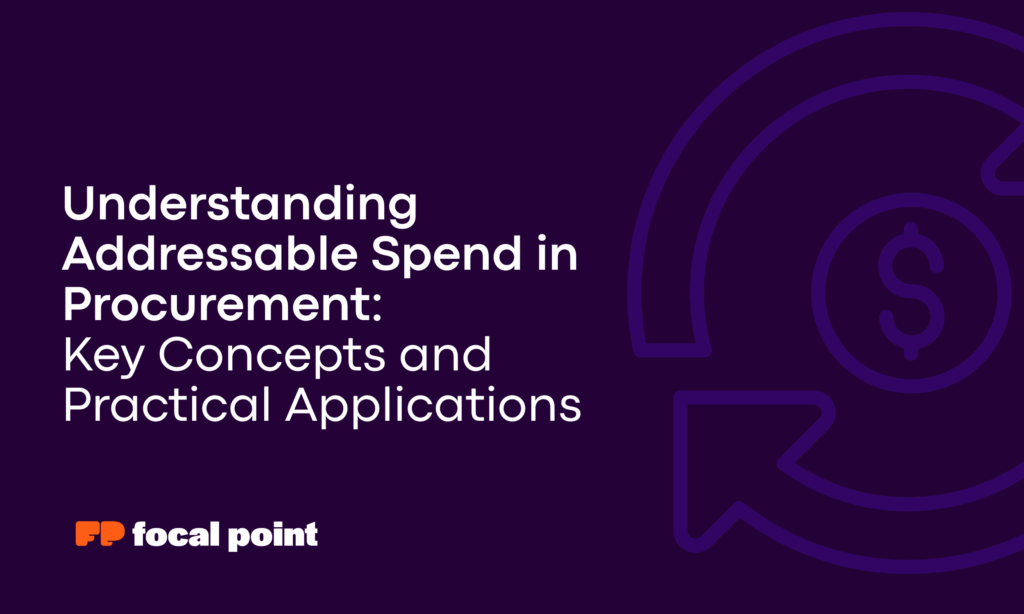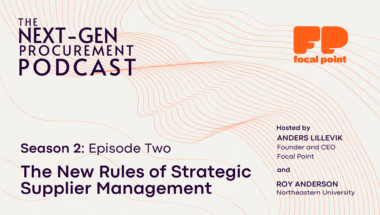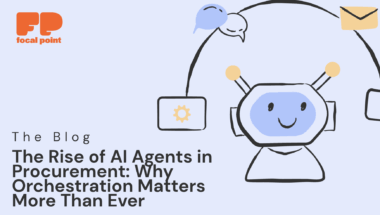If you want to make a meaningful impact on your company’s bottom line, understanding addressable spend is essential. Addressable spend is the part of your organization’s expenditures that procurement can actively manage and control through strategies like sourcing and negotiation. By focusing on this segment, you put resources toward spend areas where procurement can truly add value.

You’ll find that not every dollar your company spends is addressable—certain costs may be fixed, contractual, or outside your team’s influence. However, identifying which spend is within your reach allows you to target opportunities for improved efficiency, cost savings, and greater organizational control.
Getting clarity on addressable spend helps you prioritize procurement initiatives and demonstrate tangible value to your organization. As you explore the concepts and practices around addressable spend, you’ll discover practical ways to enhance your approach to spend management.
Optimizing addressable spend aligns perfectly with Focal Point’s mission to elevate the role of procurement enterprise-wide. By focusing on the spend you can actively influence, procurement teams move beyond transactional activities to become strategic partners that deliver measurable business value.
Defining Addressable Spend

Addressable spend is a core concept in procurement, referring to the portion of your organization’s expenditures that can be actively influenced or managed. Understanding what is and is not addressable is key to effectively optimizing costs and controlling budgets.
Addressable Spend Versus Total Spend
Total spend covers every dollar your organization spends, from direct materials to utilities and taxes. Addressable spend narrows that focus to the expenses you can directly control through procurement strategies, policies, and negotiations.
For example, addressable spend includes items like raw materials, office supplies, and contracted services—expenses you can renegotiate or source competitively. In contrast, non-addressable spend captures fixed costs or mandatory expenses, such as government fees, where you have little or no leverage. Distinguishing between these categories informs better procurement planning.
| Expense Type | Addressable | Non-Addressable |
|---|---|---|
| Raw materials | ✓ | |
| Utilities | ✓ | |
| Office supplies | ✓ | |
| Regulatory fees | ✓ |
This separation clarifies control points in your spending and targets efforts where they can have the most impact.
Key Components of Addressable Spend
Addressable spend is shaped by several specific factors. First, it includes areas where your procurement department has authority over supplier selection, pricing negotiations, and sourcing. These decisions are typically backed by contract management and competitive bidding.
You should also consider the scope of spend categories managed, such as direct (production-related) and indirect (support and non-production) expenses. Procurement teams often focus on both, provided they can influence contract terms or vendor relationships.
A breakdown of addressable spend might look like this:
- Direct spend: raw materials, parts, manufacturing components
- Indirect spend: marketing services, IT equipment, travel
Optimizing these components relies on data visibility and mature procurement processes. Unmanaged or “maverick” spending can reduce your addressable spend by diverting purchases outside approved channels.
Addressable Spend in Different Industries
The definition and size of addressable spend varies by industry. In manufacturing, most direct materials and components for production are often addressable, due to clear sourcing options and supplier competition.
Retail organizations generally find a high proportion of their spend is addressable, especially in products for resale, packaging, and logistics. However, sectors like healthcare might see a larger share of non-addressable spend because of regulatory requirements, set supplier contracts, or specialized goods.
Service industries often experience more variation. For example, IT and professional services may have addressable spend mostly in contracted labor, subscriptions, or software licenses, while essential licenses and government-mandated costs remain non-addressable.
Industry context determines how much control you have over spending and shapes procurement strategies accordingly.
Why is Addressable Spend Important?

Addressable spend allows you to focus your procurement efforts where they matter most. By identifying which expenditures can be actively managed, you gain better control over costs.
Cost Reduction is a core benefit. When you analyze addressable spend, you can target savings through supplier negotiation and smarter sourcing decisions.
This focus helps improve profit margins. Managed spend often leads to more favorable contract terms and fewer inefficiencies, which means more value retained by your business.
Increased efficiency comes from consolidating suppliers, standardizing purchases, and automating processes related to managed spend areas.
You also gain better visibility and control. Tracking addressable spend gives you clearer data and transparency, making it easier to spot trends or irregularities.
Having this insight reduces risk. When you know where your money is going, you can ensure compliance, avoid overspending, and respond quickly to any supply chain disruptions.
Addressable spend also supports more effective financial planning. By distinguishing controllable spend from non-controllable, you can set accurate budgets and align procurement strategies with business goals.
| Benefit | Example |
|---|---|
| Cost Reduction | Negotiating lower prices with suppliers |
| Improved Profit Margins | Eliminating unnecessary expenses |
| Increased Efficiency | Standardizing orders across departments |
| Better Visibility and Control | Real-time spend tracking systems |
| Reduced Risk | Identifying and mitigating supplier risks |
| Financial Planning | Building more precise spend forecasts |
The Role of Addressable Spend in Procurement
Addressable spend provides a foundation for procurement teams to analyze, control, and optimize expenses within an organization. By clearly defining what spending is addressable, you can focus resources on areas with the greatest impact and measurable results.
Strategic Sourcing Decisions
Addressable spend is essential for making informed sourcing decisions. By segmenting expenses into addressable and non-addressable categories, you can prioritize sourcing efforts where you have control.
For example, you may discover that a significant portion of your marketing, IT, or operational spend is addressable. This allows you to consolidate suppliers or negotiate new agreements for better value. Clearly identifying which areas are addressable also ensures that strategic sourcing initiatives align with larger business goals.
Creating visibility into addressable spend enables procurement to assess supplier performance, market conditions, and contract terms. This data-driven approach helps you make decisions that support cost savings, quality, and risk management.
Supplier Relationship Management
A clear understanding of your addressable spend helps you manage supplier relationships more effectively. With this information, you can identify which supplier categories present the most opportunities for performance improvement or cost negotiation.
It also helps you establish targets for supplier rationalization and measure supplier compliance with agreements. Managing addressable spend provides leverage when renegotiating contracts or consolidating suppliers.
You can segment suppliers by importance or spend volume to ensure focus on relationships that have the largest impact. Addressable spend data is also useful for tracking service levels and identifying gaps that require improvement.
Cost Optimization Opportunities
Addressable spend is the portion of expenses that procurement can actively influence. By focusing on this spend, you can identify specific cost optimization opportunities through sourcing, negotiation, and process refinement.
A detailed breakdown of addressable spend allows you to pinpoint categories with excessive pricing or inefficiencies. This can include everything from direct goods to services like professional fees or travel.
Using data on addressable spend, you can set spending controls, monitor compliance, and implement targeted cost-saving initiatives. Regular analysis supports budget discipline and ensures your organization is spending wisely and efficiently on areas you can truly impact.
How to Calculate Addressable Spend
To calculate addressable spend, you will first need to identify your organization’s total spend. This is the sum of all expenditures across your business, including goods, services, and indirect costs.
Next, determine which portion of this spend is addressable. Addressable spend refers to the spending that can be influenced or managed through procurement activities, such as strategic sourcing or supplier negotiations. Commonly excluded items include government-mandated fees, statutory payments, or monopoly services where no procurement control exists.
A simple calculation process can be summarized as:
- Total Spend: Gather the organization’s entire spend data.
- Addressable Spend: Subtract non-addressable and uncontrollable spend categories.
- Calculate Addressable Spend Percentage:
[ \text{Addressable Spend Percentage} = \left(\frac{\text{Addressable Spend}}{\text{Total Spend}}\right) \times 100 ]
Here’s a basic example in table form:
| Category | Amount ($) |
|---|---|
| Total Spend | 10,000,000 |
| Non-addressable Spend | 2,000,000 |
| Addressable Spend | 8,000,000 |
In this example, the addressable spend percentage is 80%. You can adjust the categories based on your organization’s specific spend structure.
Regularly review your spend classification to keep calculations accurate and reflect changes in procurement scope. Use data from your financial systems and procurement reports to ensure reliability.
How to Identify Addressable Spend
Addressable spend is not always reflected on the surface of your financial reports. You need a practical approach to uncover what spending categories are realistically within your control.
Data Collection Approaches
Accurate data collection is the first step to identifying addressable spend. Gather data from sources like purchase orders, invoices, accounts payable records, and contract databases. Ensure that you include both direct and indirect spend.
Centralize spend data in a single system to streamline analysis. Use templates or automated tools to reduce manual errors and inconsistencies. Collect supplier information, payment terms, and descriptions for each transaction.
Keep in mind that Focal Point’s Platform centralizes your procurement data into a single, unified platform, ensuring full visibility and access to key information
Also remember to maintain a schedule for routine data refreshes. Outdated or incomplete data may lead you to overlook important spend areas or misclassify transactions. Data quality is critical to meaningful spend analysis.
Spend Analysis Techniques
Once you have reliable data, apply spend analysis techniques to gain insight. Categorize spend based on commodity, supplier, business unit, and location. Use pivot tables, dashboards, or spend analysis software to visualize patterns and outliers.
Identify non-compliant, maverick, or fragmented spend by comparing transaction data to approved vendor lists and negotiated contracts. Look for high-frequency, low-value orders which may be consolidated to improve leverage.
Track changes in spend year over year. Anomalies and spikes can uncover addressable areas you may have previously missed, especially if tied to uncontrolled purchasing or expired contracts.
Segmentation Criteria
Not all spend is addressable—segmentation helps you focus on what can actually be influenced. Break down your total spend by category, supplier, and spend type (e.g., one-time vs. recurring). Use a table to define core categories:
| Segment | Common Examples | Addressable? |
|---|---|---|
| Direct Spend | Raw materials, components | Usually addressable |
| Indirect Spend | Office supplies, travel, IT services | Often addressable |
| Non-Addressable | Taxes, regulatory fees, salary/wages | Rarely addressable |
Assess contract coverage, market conditions, and internal policies to determine if a spend segment can be negotiated, consolidated, or sourced competitively. Reassess these segments regularly, as changing business needs can shift what is considered addressable.
Best Practices for Managing Addressable Spend
Effective management of addressable spend depends on using the right technology and building strong working relationships within your organization. These methods support cost control, improve visibility, and ensure your procurement strategy delivers results.
Leveraging Digital Tools
Digital procurement platforms offer real-time spend visibility and automate data collection, allowing you to identify savings opportunities faster. With dashboards and reporting features, you can segment spend categories, monitor compliance, and benchmark suppliers. Advanced tools also analyze pricing trends and flag out-of-policy spending.
Key benefits include:
- Faster supplier onboarding
- Automated purchase approvals
- Audit trails for transactions
- Easy integration with ERP systems
When you implement digital tools, you reduce manual errors and make sourcing more transparent. This gives you accurate data for negotiations and forecasting.
Many organizations also use spend analytics solutions. These tools help identify maverick spending and consolidate purchases to leverage volume-based discounts. Making procurement digital can enhance both control and efficiency.
Stakeholder Collaboration
Collaborating with stakeholders across finance, operations, and business units is essential for managing addressable spend. Engaging these groups early clarifies requirements, sets realistic budgets, and avoids duplicated efforts.
Regular meetings and feedback sessions ensure everyone aligns on procurement goals and compliance standards. This builds buy-in for new processes and helps spot areas to streamline.
Make use of cross-functional teams to review supplier performance and assess risks together. Communication platforms—such as shared dashboards—facilitate updates and keep stakeholders informed. When all parties contribute insights, your sourcing decisions better reflect actual business needs and priorities.
Impact of Addressable Spend on Procurement Performance
Addressable spend directly affects your procurement strategy and results. By focusing on the portion of spend you can influence, you gain greater control over supplier choices, contract terms, and negotiation outcomes.
Effective management of addressable spend gives you the opportunity to optimize costs, enhance cash flow, and improve quality through targeted sourcing initiatives. It also allows for better alignment of procurement activities with organizational goals.
You can drive measurable improvements in procurement metrics. Common impacts include:
- Cost reduction through competitive bidding and negotiation
- Process efficiency by consolidating suppliers and reducing maverick spend
- Improved compliance with procurement policies and contractual obligations
| Procurement Metric | Potential Impact of Addressable Spend |
|---|---|
| Cost Savings | Higher when spend is strategically managed |
| Supplier Performance | Easier to monitor and improve |
| Policy Compliance | Increased with greater spend visibility |
Addressable spend influences not just direct expenses but also your ability to manage risk. By identifying and optimizing controllable spend, you reduce dependency on non-strategic suppliers and increase the agility of your supply chain.
A clear understanding of addressable spend helps you prioritize initiatives, allocate resources more efficiently, and track the effectiveness of procurement efforts. This clarity supports faster decision-making in day-to-day operations.
Measuring Success in Addressable Spend Initiatives
Tracking the impact of your addressable spend initiatives is essential for effective procurement management. Focus on clear, data-driven metrics that reveal both performance and opportunities for continuous improvement.
Key Metrics to Measure:
- Spend under management: How much of your total eligible spend is actively controlled by procurement?
- Cost savings realized: Track financial outcomes from negotiations and sourcing strategies.
- Supplier performance: Evaluate on-time delivery, quality, and compliance.
Below is a sample table that outlines these metrics:
| Metric | Description | Typical Source |
|---|---|---|
| Spend Under Management | % of spend handled by procurement | Spend analysis tools |
| Cost Savings Realized | Reduction in spend via initiatives | Financial reports |
| Supplier Performance | Conducted through KPIs and scorecards | Supplier evaluations |
It is important to regularly review these figures to identify new areas for optimization. Use procurement dashboards and spend analytics tools to visualize performance and track trends over time.
Gather feedback from stakeholders across departments. Their insights can help you measure the broader impact and ensure procurement is aligned with organizational goals.
Remember to update your benchmarks and targets based on changes in spend patterns and business priorities. This will help maintain focus and adapt initiatives as your needs evolve.
Future Trends in Addressable Spend Management
Technology is reshaping how you manage addressable spend. Artificial intelligence and machine learning are driving automation in spend analysis, making it easier to identify patterns and savings opportunities.
You can expect greater data integration across procurement and finance systems. This will help you get a real-time, unified view of spend categories and supplier performance.
Sustainability is becoming a bigger factor. Companies are beginning to include environmental, social, and governance (ESG) criteria as part of spend management.
Cloud-based procurement platforms are enabling more agile and scalable solutions. These tools let you access spend data, supplier information, and analytics from anywhere.
Here’s a quick look at key trends shaping addressable spend management:
| Trend | Impact on You |
|---|---|
| AI & Automation | Streamlines analysis and sourcing |
| Data Integration | Supports better, faster decisions |
| ESG Focus | Guides sustainable procurement choices |
| Cloud Solutions | Increases accessibility and flexibility |
Procurement professionals are also using predictive analytics to anticipate future spend and risks. This supports proactive decision-making and smarter sourcing strategies.
As these trends continue, your approach to addressable spend will rely even more on data-driven insights and flexible technology.
Conclusion: Transform Your Addressable Spend with Focal Point
Understanding and optimizing your addressable spend is no longer optional for procurement teams aiming to deliver strategic value. As we’ve explored, properly managing the spend you can influence leads to substantial cost savings, improved supplier relationships, and greater operational efficiency.
However, the complexity of modern procurement ecosystems makes this challenging without the right tools and processes in place.
Focal Point’s procurement management platform centralizes your data, automates workflows, and provides the visibility needed to identify and manage addressable spend effectively. Our solution eliminates system-switching, standardizes processes, and transforms fragmented procurement data into actionable insights—all while seamlessly integrating with your existing systems.
Ready to maximize the impact of your addressable spend? Schedule a demo today to see how Focal Point can help your procurement team shift from manual processes to strategic value creation, all while improving visibility and control across your entire spend ecosystem.



